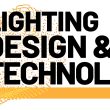When it comes to LED lighting, photocells play a crucial role in ensuring optimal performance and energy efficiency. As a leading provider of LED lighting solutions, Access Fixtures is often asked about the benefits and applications of photocells in LED lighting systems.
Photocells are essentially sensors that detect the presence or absence of light and adjust the lighting system accordingly. In the case of LED lighting, photocells are used to automatically turn lights on and off, or adjust their brightness, based on the available natural light.
One of the primary benefits of photocells in LED lighting is energy savings. By automatically turning off lights when natural light is sufficient, photocells can help reduce energy consumption and lower energy bills.
Another advantage of photocells is their ability to extend the lifespan of LED lights. By reducing the amount of time lights are in use, photocells can help prevent overheating and prolong the life of the LED lights.
According to the U.S. Department of Energy, photocells can help reduce energy consumption by up to 50% in commercial buildings.
In addition to energy savings and extended lifespan, photocells can also improve the overall performance of LED lighting systems. By automatically adjusting the brightness of lights based on the available natural light, photocells can help create a more comfortable and productive work environment.
When selecting a photocell for your LED lighting system, it’s important to consider factors such as sensitivity, range, and compatibility with your specific lighting system.
At Access Fixtures, we offer a range of photocells designed to work seamlessly with our LED lighting solutions. Our photocells are designed to provide accurate and reliable detection of natural light, ensuring optimal performance and energy efficiency in your LED lighting system.
Whether you’re looking to upgrade your existing lighting system or install a new one, our team of lighting specialists is here to help. Contact us today to learn more about our photocells and how they can benefit your LED lighting system.









